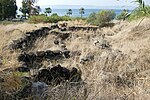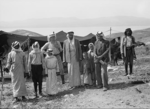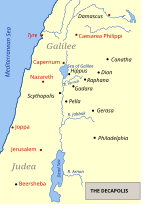Kursi, Sea of Galilee
5th-century establishments in the Byzantine EmpireAncient Jewish settlements of GalileeBuildings and structures demolished in the 8th centuryByzantine sacred architectureByzantine sites in Asia ... and 13 more
Christian monasteries established in the 5th centuryChristian monasteries in SyriaClassical sites on the Golan HeightsDemolished buildings and structures in SyriaFormer populated places in the Golan HeightsGospel of LukeGospel of MarkGospel of MatthewMonasteries of the Byzantine EmpireNational parks of IsraelNew Testament placesRuins in SyriaSea of Galilee

Kursi (Byzantine Greek Κυρσοί) is an archaeological site in the Golan Heights containing the ruins of a Byzantine monastery and identified by tradition as the site of Jesus' "Miracle of the Swine". Part of the archaeological site is now an Israeli national park. Kursi takes its name from the Talmudic site. A marble slab with Aramaic text discovered in December 2015 seems to indicate that the settlement had, as of ca. 500 CE, a Jewish or Judeo-Christian population.
Excerpt from the Wikipedia article Kursi, Sea of Galilee (License: CC BY-SA 3.0, Authors, Images).Kursi, Sea of Galilee
92, Golan Regional Council
Geographical coordinates (GPS) Address Nearby Places Show on map
Geographical coordinates (GPS)
| Latitude | Longitude |
|---|---|
| N 32.826086111111 ° | E 35.650377777778 ° |
Address
Basilika
92
Golan Regional Council
North District, Israel
Open on Google Maps





